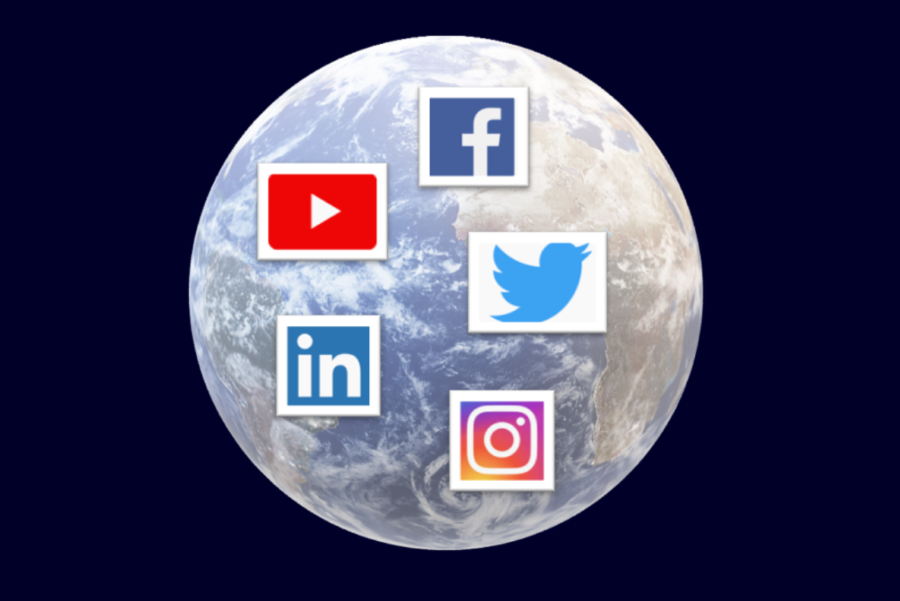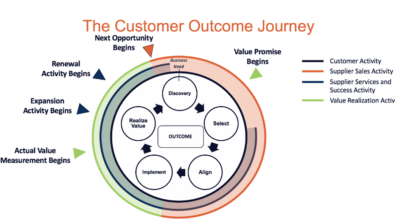Navigating the digital B2B buyer’s journey

The B2B buyer’s journey is undergoing seismic shifts. The good news is you can avoid falling through the cracks by following a path based on a simple concept called digital selling. But, before I get ahead, let’s back up to what is happening in the B2B world.
Before the COVID-19 pandemic, Gartner predicted that by 2025, 80 percent of B2B sales interactions would occur via digital channels. The pandemic accelerated the pace at which the B2B buyer’s journey became a primarily online process. This cut out face-to-face interaction, and guess what? Customers loved it. Many customers want (no, expect!) a great digital experience, particularly with a generational shift that has seen more than 62 percent of millennials moving into management roles. According to Gartner, the generation has a unique way of thinking: more than 44 percent of millennial B2B buyers prefer to close a deal without interacting with a sales rep. As vendors, we must meet buyers on their terms, which requires us to develop a new sales strategy.
Align social selling with the B2B buyer’s journey
Today’s technology buyers demand a seamless, personalized experience. They are looking for a trusted advisor who understands their priorities and can provide value at every touchpoint. It’s a demanding expectation, which may require altering your mindset and developing a new approach to selling.
Sales cycles are longer, with more people involved in decision-making. Buyers are doing more research before choosing vendors and products. Yet, relationship building remains a necessity. You will outperform your competitors if you master a mindset that accounts for all these considerations. A recent report from McKinsey stated that B2B companies that add personalization to digital sales achieve five times more revenue than those that do not.
More than half the world is active on social media. That is 4.62 billion people connecting digitally every day. Needless to say, this is the place to be, especially when 82 percent of B2B brands are active on social media. B2B buyers rely on information from these platforms, so begin leveraging them.
How to build a personal brand
The first step is building your digital persona. Professional photos, value statements, and interactive content create the foundation of your digital persona. Use this HubSpot guide to update and optimize your profile.
Always add value for your customer. That is the golden rule of digital and social selling. Think of yourself as an educator, always teaching your customer something new, relevant and personal. B2B tech buyers are hungry for insights. They crave whitepapers, product sheets, case studies, comparison worksheets and webinars. As a Siemens partner, you have access to a bountiful library of digital assets designed for social media, many available in multiple languages. Start giving your customers what they want.
After establishing a foundation, leverage your customer relationship management (CRM) system to connect with customers and prospects. Pay attention to what your targets are posting. Every like, comment and view is a clue, telling you what your customers care about. Demonstrate thought leadership by sharing insights and valuable information that aligns with the topics that interest them.
Once the customer or prospect engages in the conversation, it is time to initiate a relationship. Always look for a mutual connection to make the introduction. Eighty-seven percent of B2B buyers on LinkedIn have a favorable impression of a salesperson introduced to them by someone already in their professional network. When a prospect accepts the connection request, continue adding value. Build a plan that increases touchpoints until you can schedule a meeting. From that point, do what you’ve always done best and develop the opportunity.
Invest time in B2B digital selling
Let me end by saying this is a balancing act. There is no expectation that you immediately shift all of your focus to digital selling, especially when you already have a proven process. However, as the B2B buyer’s journey continues to be an increasingly online endeavor, having a digital strategy will be vital to remain relevant.
Select a popular social media platform in your region and build your profile. Adopt a customer-first mindset and start finding relevant industry insights to share with your target audience. These insights might be upcoming trends, competitor analyses or customer reviews – whatever it may be, always ask yourself, “does this add value for the customer?”
If you are a Siemens partner, you can find Digital Selling Tips on our Partner Onboarding Platform, PowerPaths.
About the authors
James Gregory is the Director of Global Partner Business Development at Siemens Digital Industries Software with over 25 years of sales leadership leading technology providers around the globe. At Siemens, he is responsible for global partner coverage and capacity.
Nathalie Schickendantz is a global partner analytics co-op at Siemens Digital Industries Software studying Marketing and Psychology at the University of Cincinnati.
Comments
Leave a Reply
You must be logged in to post a comment.



The pace of the sales cycle has quickened through digitalization and the covid pandemic with the normalization of remote contact – even for complex deals. Great points about both digital selling and individual brands in the current environment.
It will take a bit of time to build your personal digital brand, but the payoff is potentially immense. Demonstrating expertise in the areas customers care about will cause them to think of you first when they face new challenges.